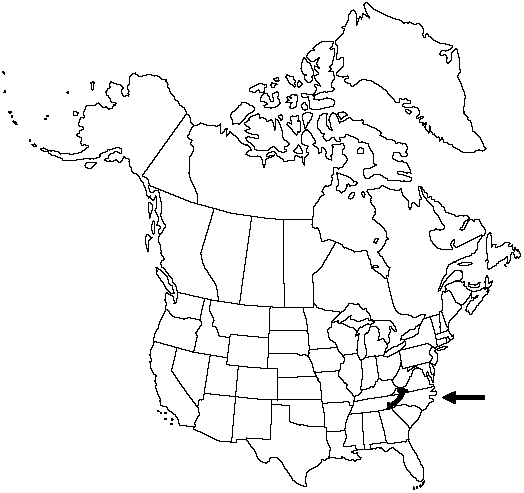Abies fraseri
in Lamarck et al.,Encycl. 5: 35. 1817.
Trees to 25m; trunk to 0.75m diam.; crown spirelike. Bark gray, thin, smooth, with age developing appressed reddish scales at trunk base. Branches diverging from trunk at right angles; twigs opposite, pale yellowbrown, pubescence reddish. Buds exposed, light-brown, conic, small, resinous, apex acute; basal scales short, broad, equilaterally triangular, glabrous, resinous, margins entire, apex sharp-pointed. Leaves 1.2–2.5cm × 1.5–2mm, 2-ranked, particularly in lower parts of tree, to spiraled, flexible; cross-section flat, grooved adaxially; odor turpentinelike, strong; abaxial surface with (8–) 10 (–12) stomatal rows on each side of midrib; adaxial surface dark lustrous green, sometimes slightly glaucous, with 0–3 stomatal rows at midleaf, these more numerous toward leaf apex; apex slightly notched to rounded; resin canals large, ± median, away from margins and midway between abaxial and adaxial epidermal layers. Pollen cones at pollination reddish yellow or yellowish green. Seed-cones cylindric, 3.5–6 × 2.5–4cm, dark purple overlaid with yellowish green bracts, sessile, apex round; scales ca. 0.7–1 × 1–1.3cm, pubescent; bracts exserted and reflexed over cone-scales. Seeds 4–5 × 2–3mm, body brown; wing about as long as body, purple; cotyledons ca. 5.2n =24.
Habitat: Mountain forests
Elevation: 1500m
Distribution

N.C., Tenn., Va.
Discussion
Some (e.g., B.F. Jacobs et al. 1984) have argued that Fraser fir is at the end of a disjunct cline of balsam fir and perhaps does not deserve separate specific status. A.E. Matzenko (1968) took the opposite view, classifying Fraser fir and balsam fir in different taxonomic series of the genus.
Of conservation concern.
Selected References
None.